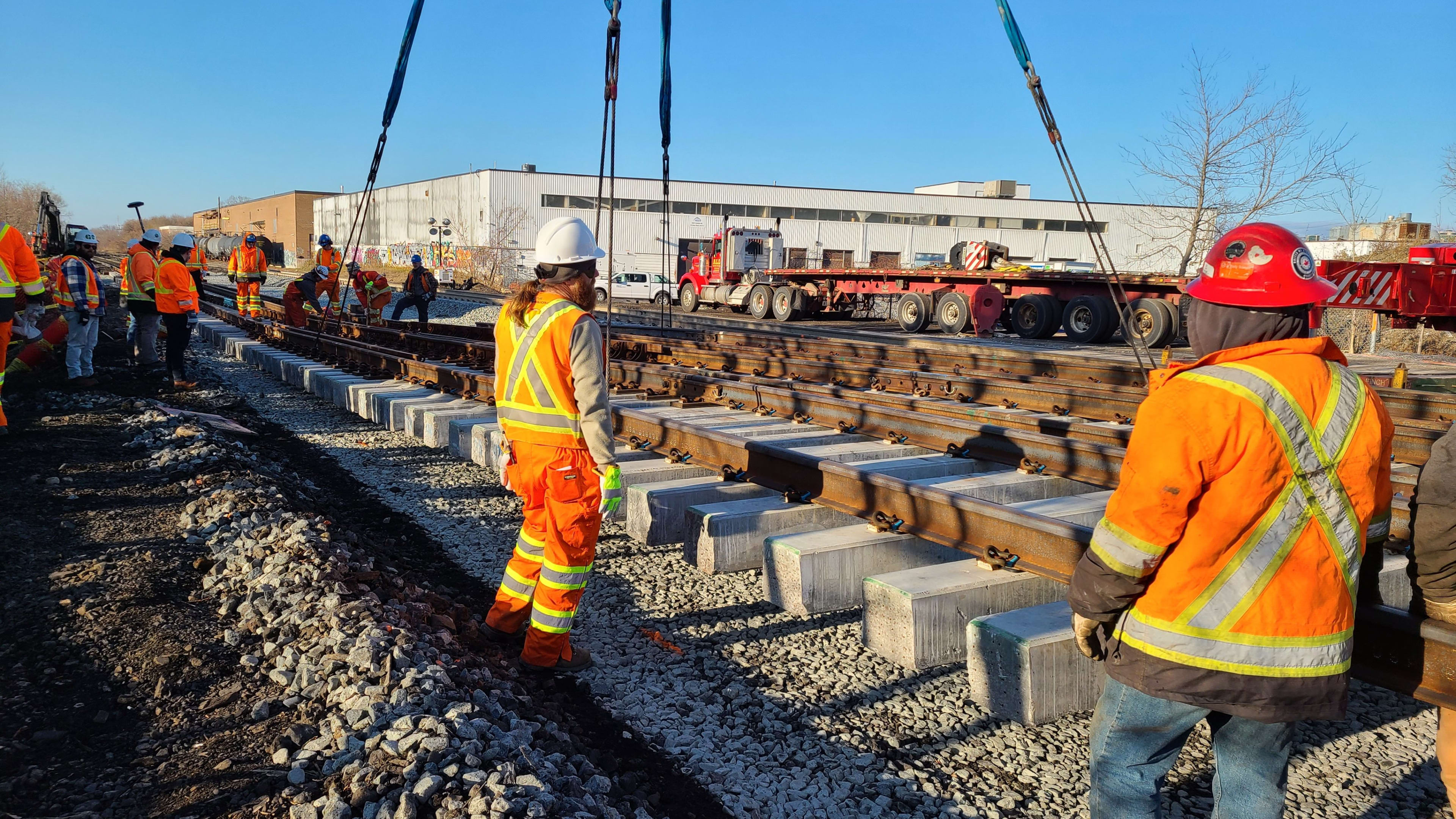Share
Adjusting GO train service today for better transit tomorrow
We’ll explain how service adjustments are planned and why they support future service enhancements.
Jul 26, 2024
As Metrolinx continues work on a once-in-a-generation transit expansion, sometimes we need to adjust GO train service.
We know these service impacts affect your plans and your commute. But it’s part of how we strengthen the foundations for the future of transit. We’ll explain.
Why do we adjust service?
Crews performing track and signal work along the Lakeshore West Line. (Metrolinx photo)
Expanding transit across our network means building and improving on the existing rail network. To do that, we sometimes need to reduce or stop service on the portion of the line we want to work on.
We may be able to use one or two tracks while the others are being worked on, but that may mean we need to reduce service from running every 15 minutes down to every half hour or hour. In other cases, we are not able to use the tracks at all, and GO train service is replaced by buses. Disruption times could be as short as a single evening or extend throughout an entire weekend.
How do we plan service adjustments?
Ongoing work may require adjustments to regular GO train service. (Metrolinx photo)
These planned weekend closures are already delivering results. For example, following recent construction work, Confederation GO Station officially opened in October 2025, and Lakeshore West customers now benefit from more service between Hamilton and Toronto, including new weekday and weekend trips.
Similarly, infrastructure upgrades completed during weekend closures have enabled new weekend GO Train service on the Kitchener Line, giving customers in communities like Guelph and Kitchener more flexible travel options and better access to Toronto.
We know that customers rely on GO Transit to travel to work, appointments and to get to events happening in the city. That’s why GO train service adjustments are designed to keep things moving with the smallest possible impact.
“It’s all about balance,” said Patricia Henriques, the senior manager for rail corridor access control at Metrolinx.
While some work is done during regular service, crews must stop frequently to let trains pass. This takes between five and 10 minutes each time, depending on the location and the size of the work zone.
“To do work between trains running both ways on 15-minute service, would mean stopping every seven-and-a-half minutes for a train, so productivity is really low when trains are on the corridors,” Henriques said.
While weekend-long interruptions get the most attention, Henriques and her team look at all options to see if work can be done safely while keeping some tracks open, even if it means less frequent service for a short time.
Less disruptive work, like site walks and surveying, can take place without track closures.
But more expansive projects sometimes require the full closure of an entire line. That could include major work like the installation of a new pedestrian bridge or tunnel for instance. Such extensive construction is planned as early as possible. For instance, track closures for the following year can already be mapped out, well ahead of any concerts and events that may be subsequently announced.
We know that changes to service can affect your plans, we always communicate these adjustments to our customers, sports and concert venues, event planners and other partners well in advance. Where possible we offer alternative transit options including the GO bus and transfers to other transit partners using Ontario's One Fare so customers can plan their journey accordingly.
Be sure to sign up for On the GO alerts and follow your GO line on X to get the latest information.
How does adjusting service build better transit?
Crews performing work along the Lakeshore West Line. (Metrolinx photo)
GO’s service is evolving into a rapid rail system to bring customers faster and more frequent service.
Expanding GO service means making sure GO trains continue to safely run on-time throughout various phases of construction, as Metrolinx looks to upgrade and add new stations and track infrastructure to support a new transit reality.
While some of this is a long-term vision, customers are already seeing the benefits. Recent weekend closures have enabled the opening of Confederation GO Station and more frequent Lakeshore West service between Hamilton and Toronto, including new weekday and weekend trips. On the Kitchener Line, construction work has made it possible to launch new weekend GO Train service, expanding travel options for communities like Guelph and Kitchener. And GO service to the Niagara area is expanding too, all made possible by the progress achieved during planned service interruptions. These improvements are early signs of the more convenient, frequent, and connected transit future Metrolinx is building.
“We understand that this is not ideal for people who planned to go watch a game that weekend and they need to find a different way to get to the game, but we hope they can see that we are building for them", Henriques said.
by Mike Winterburn Metrolinx communications senior advisor, Shane Kalicharan Metrolinx Editorial Content Producer
